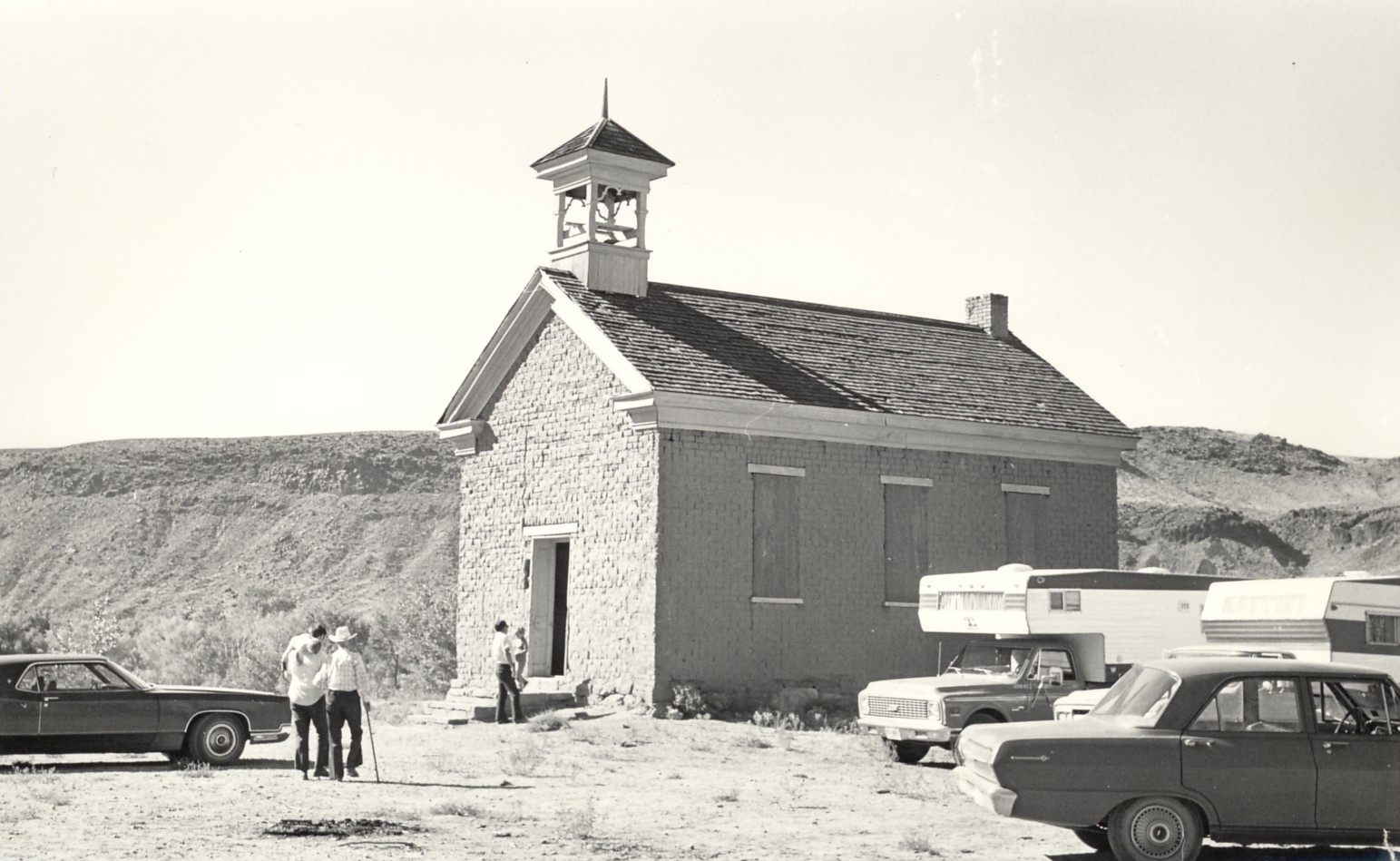
WASHINGTON COUNTY HISTORICAL SOCIETY (Washington County, Utah)
GRAFTON SCHOOL HOUSE (aka ADOBE MEETING HOUSE)
Grafton, Utah
LOCATION
37° 10' 3.28" North Latitude, 113° 4' 54.31" West Longitude3,651 feet MSL
Map of Grafton, Feature 22
HISTORY
The Grafton Ward was organized in 1877 and quickly outgrew the little log school house of 1862. The chapel was begun in 1886 and dedicated on July 8, 1888. The ward was demoted to a branch of the Rockville Ward in 1907. It was decommissioned altogether in 1921 and the chapel has not been used since that time.The town and its meeting house were featured in the 1930 film "The Arizona Kid" and more recently in "Butch Cassidy and the Sundance Kid".
Two efforts to preserve Grafton faltered while the town's buildings suffered serious deterioration and vandalism. Lu Wayne Wood, who was born in Grafton in 1911, initiated a new effort to stabilize the town's church/school in 1995. The adobe building was in imminent danger of collapse. From this focus on a single building, the project expanded to include the entire town site. The need for action was urgent as pressure was growing from developers who wanted to purchase the land surrounding Grafton and construct condominiums.
The Grand Canyon Trust joined the partnership to support the preservation of the fragile Virgin River riparian environment. The Trust took on significant fundraising for the project as well as scientific analysis of the site. David Hatfield, mayor of the nearby town of Rockville, accepted the chairmanship of the partnership. His patient leadership helped the ideologically diverse members of the partnership reach successful compromises.
The Grafton Heritage Partnership's achievements are many. It has sensitively renovated the historic church/school and secured commitments from the private landowners in the townsite to keep their land in agricultural use. It also raised $1,350,000 to purchase the 220-acre Stout Ranch that surrounds the townsite to prevent Grafton from being ringed by development.
The Grafton Heritage Partnership has continued working on the restoration and interpretation of the town site.
Commentary by Mary Phoenix:
The church and the cemetery are almost all that is left of Grafton, once considered the most promising of settlements in southern Utah. It seemed to have everything in its favor, good soil, water easily available and a breathtakingly beautiful location.
The church was dedicated in July of 1888. Wanda Truman, one of the last people left who spent their early life in Grafton, says that it is impossible for one not a native to understand what the church meant to the people. They were educated there, they attended church services in it, they held weekly dances and socials there and they were buried from there.
Everyone worked on its construction. Even the adobes were made right on the site. It is a symbol to these people of the Golden Rule as they lived it, where everyone did love their neighbors as themselves. Just looking at this old building can make us feel as these people did.
PHOTOS

WCHS-00370 Adobe meeting house in Grafton
WCHS photos:
WCHS-00555 Jon Bowcutt sketch of the Grafton Church
Other photos on the web:
The adobe meeting hall and house at Grafton
Photo of the adobe meeting hall at Grafton
A collection of Grafton ghost town photos
REFERENCES
Historic Grafton PamphletGrafton historical features
Historical Buildings of Washington County (Volume 1), pp. 32-33.
Washington County Chapter, Daughters of the Utah Pioneers, " Under Dixie Sun".
1950 with 1978 Supplement.
Page 119.
Dr. Lyman D. Platt, "Grafton: Ghost Town on the Rio Virgin".
St. George: St. George Magazine, 1998. 200 p.
Victor Hall, "Life in Grafton"
This article is based on accounts by Grace Atkin Woodbury and Bertha Wood Hall.